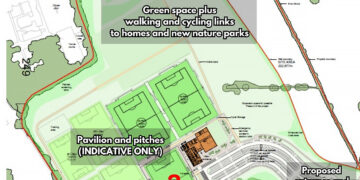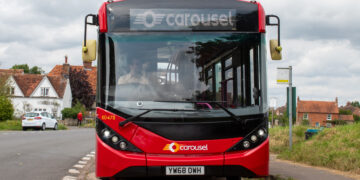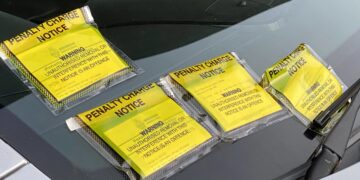A NEW survey suggests that more than one in 10 children living in Wokingham borough are living in poverty – and in Reading East, the figure is even higher: one in five.
In researching new child poverty map of the UK The End Child Poverty coalition said it has discovered that more than 3.5million children in the UK live in poverty, of which 380,000 are in the south east.
The research broke down the figures to parliamentary constituencies and local authorities. The highest levels in the UK are found in large cities, particularly in London, Birmingham and Manchester.
Of the four parliamentary constituencies covered by The Wokingham Paper, Wokingham has the least child poverty – the research suggests that 2,596 children are affected by poverty, or 11.01%.
Maidenhead, which includes Hurst, Twyford and Remenham and is served by Theresa May MP, has 2,511 children in poverty, just over 12%.
In Bracknell, which includes Finchampstead, there are 4,066 children in poverty, while in Reading East there are 4,290 children, or 19.56%
Constituency Number of children Percentage
Wokingham 2,596 11.01%
Henley 2,511 12.24%
Maidenhead 2,941 13.16%
Bracknell 4,066 16.90%
Reading East 4,290 19.56%
Reading West 5,891 23.59%
The researchers have also looked at borough councils’ data.
Wokingham Borough is the lowest in the south east, with 3,672 children or 10.44%.
Neighbouring Reading has 8,478 or 24.24% of children living in poverty.
| Borough council | Number of children | Percentage |
|---|---|---|
| Wokingham | 3,672 | 10.44% |
| West Berkshire | 5,159 | 14.93% |
| Bracknell Forest | 4,281 | 16.48% |
| Reading | 8,478 | 24.24% |
End Child Poverty is a coalition of charities, faith groups and trade unions. They say that the benefits freeze in place until the end of the decade will mean that as prices rise, low income families will find it increasingly hard to pay for the same basic essentials.
At the same time, it argues, recent cuts to in work support under Universal Credit further penalise low income working families – pushing more working families below the poverty line.
End Child Poverty is calling on the Government to use the upcoming Autumn Statement to end the freeze on children’s benefits, and to reverse the sharp cuts being introduced to in-work benefits under Universal Credit.
Chair of End Child Poverty Sam Royston said: “As the Prime Minister has rightly recognised, this is not a country that works for everyone. In every community, there are children being denied the happy childhoods and the good start in life other children take for granted. Our children are now twice as likely to be poor as our pensioners.
“Many families who are just about managing today, won’t be managing tomorrow if Universal Credit leaves them with fewer pounds in their pocket, and if rising costs of living means their money doesn’t stretch as far as it used to.
“This month’s Autumn Statement is a major opportunity for the new government to act to help these families. We urge the Chancellor to reverse the significant cuts to Universal Credit targeted at working families and, at the very least, shield children’s benefits from inflation.”
Local reaction
We contacted all four of the borough’s MPs for a comment.
Rob Wilson, MP for Reading East, told The Wokingham Paper: “I firmly believe that work is the best route out of poverty, and am pleased that in Reading East we have seen a fall of 2.3% in unemployment since 2010. The report from End Child Poverty shows that on its calculations, child poverty in Reading East is below both national and regional averages.
“The Government has made clear its commitment to tackle the root causes of child poverty, through delivering real social reforms that improve the life chances of people in Reading East and across the UK. Crucially, there are now 300,000 fewer people in relative and half a million fewer in absolute poverty since 2010.”
However, Wokingham Borough Council has questioned the figures.
Cllr Richard Dolinski, deputy executive member for children’s services, said: “These figures don’t reflect the true picture.
“For example our percentage of free schools meals is more like 5%. But although there is less child poverty in our borough than anywhere else, we still take it seriously.”
How End Child Poverty collated the data
End Child Poverty created the figures based on the latest available data from 2013. It said that the data has been assembled on the basis of:
- The HMRC figures estimating local child poverty based on administrative data. This combines a count of children on out of work benefits and children in families on tax credits whose reported family incomes are below 60 per cent of the median. Child Benefit data are used to count the total number of children in each area.
- An estimated update to the above data, which is about 2½ years out of date at the time of publication. The update uses more recent regional Labour Market Survey data on trends in the number of children in out of work households to adjust figures for out-of-work child poverty.













































